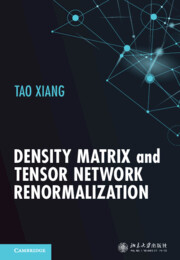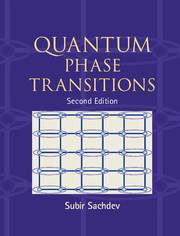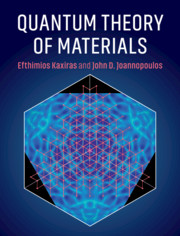Density Matrix and Tensor Network Renormalization
Renormalization group theory of tensor network states provides a powerful tool for studying quantum many-body problems and a new paradigm for understanding entangled structures of complex systems. In recent decades the theory has rapidly evolved into a universal framework and language employed by researchers in fields ranging from condensed matter theory to machine learning. This book presents a pedagogical and comprehensive introduction to this field for the first time. After an introductory survey on the major advances in tensor network algorithms and their applications, it introduces step-by-step the tensor network representations of quantum states and the tensor-network renormalization group methods developed over the past three decades. Basic statistical and condensed matter physics models are used to demonstrate how the tensor network renormalization works. An accessible primer for scientists and engineers, this book would also be ideal as a reference text for a graduate course in this area.
- Introduces the theory step-by-step with detailed derivations and diagrammatic representations of tensors and equations, making it accessible to students without specialised training in mathematics and physics
- Discusses the context in which the tensor network algorithms were developed, including interdisciplinary applications
- Serves as a useful reference text on which an advanced course on the density matrix and tensor network renormalization could be based
Reviews & endorsements
‘This is the comprehensive textbook the research community on tensor network has been anticipating. Student readers can quickly get used to standard formulations and pictorial diagrams without much effort. Even an expert in this field can capture the current frontiers and can refresh the fundamental concepts. I learned something new every time I read a paragraph.’ Tomotoshi Nishino, Kobe University
‘The author steers the reader expertly through sometimes complex methods, explaining why each is introduced, rather than simply presenting recipes, and choosing physical examples to provide guidance through the technical material.’ Bruce Normand, Paul Scherrer Institute
‘This authoritative introduction will become an invaluable resource for newcomers and experts alike. A very welcome feature is the use of a unified set of notational and diagrammatic conventions, employed consistently throughout the text. This greatly aids the reader in recognizing recurring strategies and ideas.’ Jan von Delft, Ludwig-Maximilians-University Munich
Product details
August 2023Hardback
9781009398701
470 pages
250 × 176 × 30 mm
0.94kg
Available
Table of Contents
- Preface
- Abbreviations
- Unit used
- Notations and graphical representations
- 1. Introduction
- 2. Basic algebra of tensors
- 3. Tensor network representation of classical statistical methods
- 4. Tensor-network ansatz of wave functions
- 5. Criterion of truncation: symmetric systems
- 6. Real-space DMRG
- 7. Implementation of symmetries
- 8. DMRG with non-local basis states
- 9. Matrix Product States
- 10. Infinite Matrix Product States
- 11. Determination of MPS
- 12. Continuous Matrix Product States
- 13. Classical Transfer Matrix Renormalization
- 14. Criterion of truncation: non-symmetric systems
- 15. Renormalization of quantum transfer matrices
- 16. MPS solution of QTMRG
- 17. Dynamical Correlation Functions
- 18. Time-dependent methods
- 19. Tangent-space operations
- 20. Tangent-space approaches
- 21. Tree Tensor Network States
- 22. Two-dimensional tensor network states
- 23. Coarse graining tensor renormalization
- Appendix A
- References
- Index.






